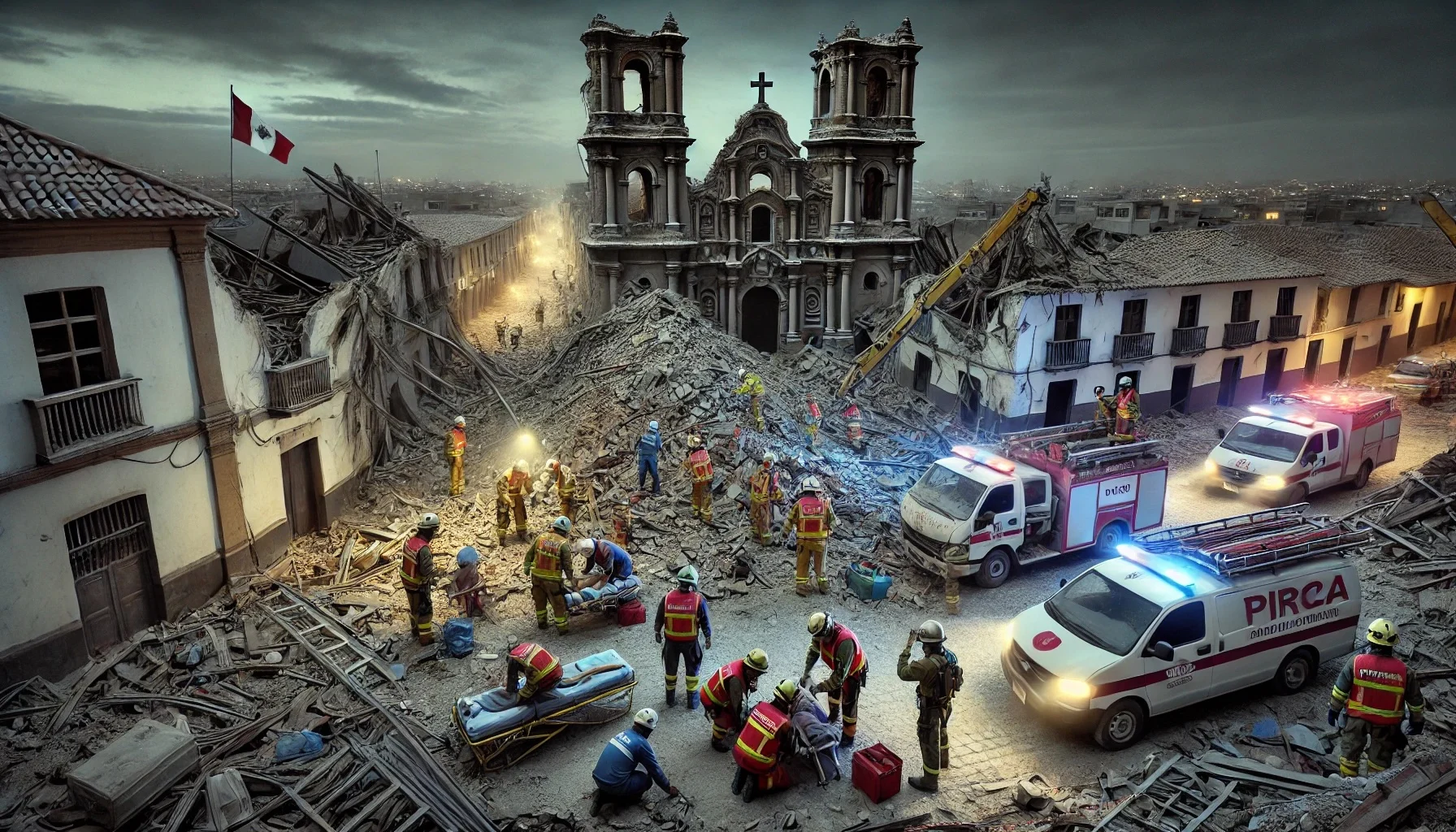
The 2007 Peru Earthquake
by: The Calamity Calendar Team
August 15, 2007
At precisely 6:40 PM local time on August 15, 2007, the city of Pisco, Peru, was jolted by an unrelenting force. For what felt like an eternity, two minutes of shaking turned the world upside down. Buildings that had stood for decades crumbled like sandcastles, and roads cracked open, swallowing everything in their path. The once vibrant city, home to about 130,000 people, was reduced to ruins.
The Moment the Earth Shook
It was a calm evening in Pisco, and many residents were winding down after a day of work. Some were cooking dinner, while others were preparing for a peaceful evening with family. Without warning, a deep rumble emanated from beneath the Pacific Ocean, about 150 kilometers off the coast. This was the Nazca Plate's ominous reminder that it was still very much alive, sliding beneath the South American Plate in a titanic geological dance.
The earthquake, measuring 8.0 on the moment magnitude scale, released energy equivalent to hundreds of atomic bombs. The initial shockwave was so powerful that it was felt as far away as Lima, the capital city, causing chaos and fear to spread rapidly.
Immediate Impact and Chaos
As buildings collapsed, a thick cloud of dust enveloped Pisco, making it hard to breathe or see. The city’s cathedral, a historical and cultural icon, was among the many structures that did not withstand the quake. As parishioners gathered for a church service, the roof caved in, trapping and tragically killing many inside.
The cacophony of alarms, shouts, and the terrifying roar of crumbling infrastructure created an atmosphere of sheer panic. People fled their homes, seeking refuge in open spaces, away from the dangerous debris. Streets were quickly filled with frightened families, many injured and in shock, as they tried to make sense of the disaster that had just unfolded.
The Aftermath: Destruction and Despair
By the time the earth stopped shaking, the destruction was staggering. Approximately 595 people lost their lives, and more than 1,200 were injured. Thousands were left homeless, as over 58,000 homes were either destroyed or severely damaged. The city of Pisco bore the brunt of the devastation, with about 80% of its buildings reduced to rubble.
Thanks for subscribing!
The impact of the earthquake was not just physical but deeply emotional. Families mourned the loss of loved ones, and entire communities were shattered. The sense of normalcy was gone, replaced by the daunting reality of rebuilding from scratch.
Response and Resilience
In the wake of the disaster, Peru's government declared a state of emergency, mobilizing military and civil defense units to the affected regions. Rescue teams worked tirelessly, digging through debris with their bare hands, searching for survivors trapped beneath the ruins. Every life saved was a small victory amid overwhelming tragedy.
International aid poured in, with countries and organizations around the world offering financial assistance, supplies, and personnel. The United Nations, the United States, and the European Union were among those who responded swiftly, demonstrating a global commitment to helping Peru in its hour of need.
Rebuilding and Moving Forward
As the dust settled, the focus shifted to reconstruction. The Peruvian government launched a massive rebuilding campaign, emphasizing the need for earthquake-resistant structures. Engineers and architects worked together to design buildings that could withstand future seismic events, using lessons learned from the catastrophe.
The disaster also prompted a reevaluation of Peru's emergency preparedness. Building codes were revised, and educational programs were launched to raise awareness about earthquake safety. The goal was clear: to ensure that such a tragedy would never again catch the nation unprepared.
A Legacy of Hope
The 2007 Peru earthquake left an indelible mark on the nation, a somber reminder of nature's unpredictable power. Yet, it also showcased the resilience and strength of the Peruvian people. Communities came together to support one another, finding solace in unity and hope in the promise of rebuilding.
As Peru continues to heal, the memory of that fateful day serves as both a warning and a testament to human courage. In the face of overwhelming odds, the people of Pisco and surrounding areas have demonstrated an unwavering spirit, turning tragedy into an opportunity for growth and renewal.
Stay in the Loop!
Become a Calamity Insider and get exclusive Calamity Calendar updates delivered straight to your inbox.
Thanks! You're now subscribed.